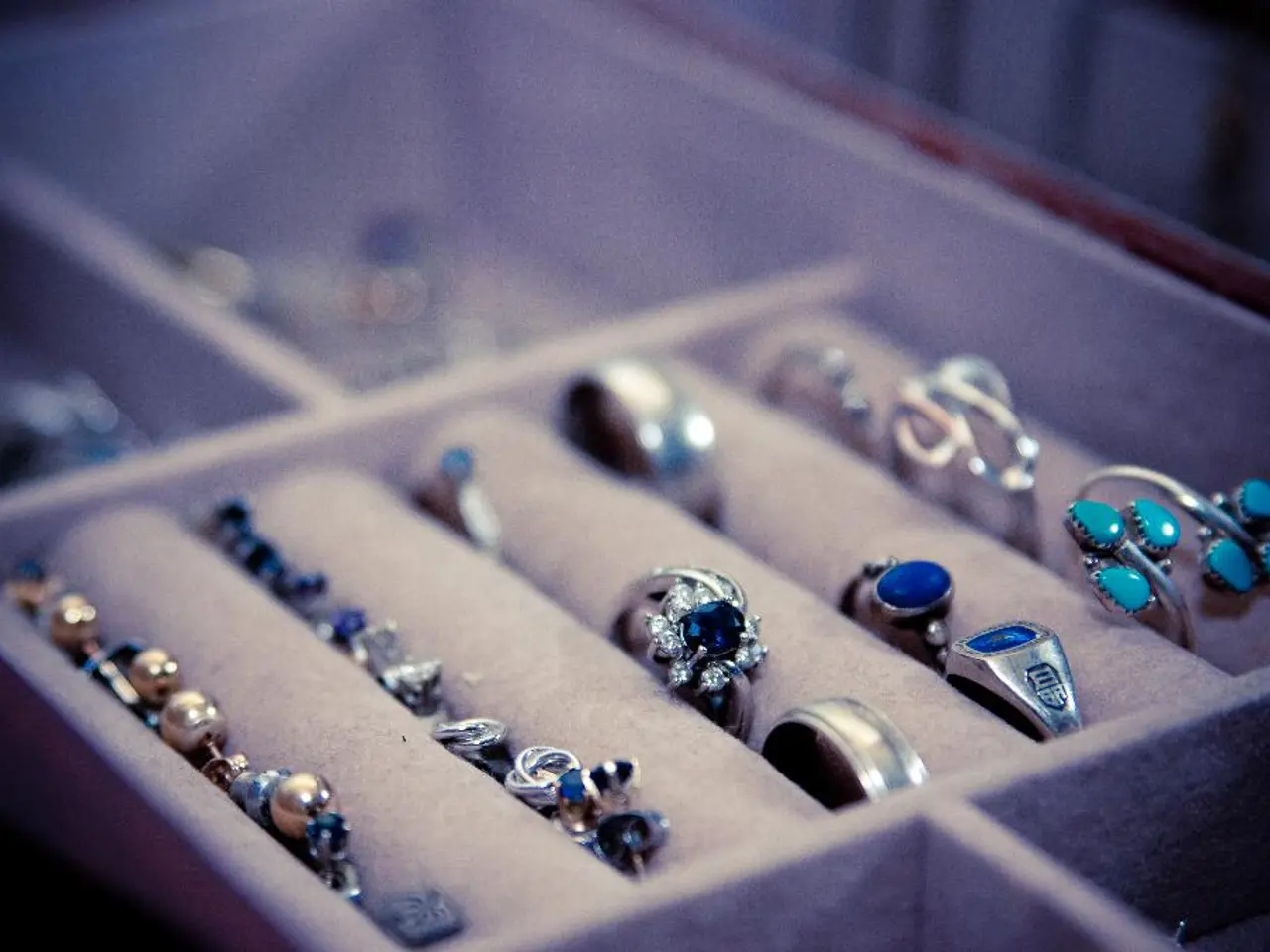Information on Agate: Value, Pricing, and Jewelry Use
===================================================================
Agates, a variety of cryptocrystalline quartz, are known for their striking visuals and intriguing patterns. These semi-precious stones, found in various parts of the world, showcase a wide range of colors and patterns that are reminiscent of natural landscapes, plant life, and lacy networks.
Colors and Patterns
Agate stones are renowned for their characteristic banded patterns, resulting from concentric bands of colour. Common natural colours range widely, especially white, gray, brown, red, orange, yellow, green, and sometimes black.
One of the most captivating varieties is the Tree Agate, which usually ranges from white to green with a translucent quality. On the other hand, the Crazy Lace Agate exhibits a vibrant mix of red, brown, yellow, orange, and white. The Moss Agate has green, moss-like inclusions resembling plant life, while the Dendritic Agate displays fern- or tree-like dendritic (branching) inclusions or patterns.
Another notable variety is the Blue Lace Agate, known for its linear, lace-like blue banding. Lace Agates can be found in Mexico, Arizona, and Namibia, while Moss Agates can be found in India, Scotland, and the northwestern United States.
Sources and Enhancements
Fire Agates, primarily sourced from Mexico, exhibit iridescence due to inclusions of iron hydroxides called limonite. Turritella Agates consist primarily of shells and shell fragments of the gastropod genus Turritella and certain other species.
Dyeing is a common and relatively stable enhancement technique for agates, with Idar-Oberstein, Germany, having a celebrated and secret dyeing process. Many agates undergo commercial dyeing processes, with banded agates often having artificially enhanced colors. Enhancements in agates should be disclosed to consumers to maintain marketplace transparency.
Size and Durability
Agates can grow into large sizes, sometimes weighing several pounds and spanning many inches in diameter. Agate stones are renowned for taking an exceptional polish and have remarkable durability.
Uses and Applications
Petrified wood agate is formed from fossilized ancient tree trunks and limbs with their organic components replaced by agate stone over millions of years. Shell agates feature patterns created by embedded, silicified shells. Designers often take advantage of agate's intriguing patterns to create unique jewelry pieces.
In conclusion, the world of agates offers a rich tapestry of colours, patterns, and origins. From the banded stripes and moss-like inclusions to the dendritic tree patterns and multicoloured combinations in earthy tones, these semi-precious stones continue to captivate and inspire.
- Mineralogy enthusiasts can discover a broad array of gemstones, including Agates, showcasing a wide range of colors and patterns, often used in jewelry for their intriguing visuals.
- Lifestyle magazines, in the sections dedicated to fashion-and-beauty, might feature unique jewelry pieces crafted from various Agate varieties, highlighting their rare patterns and inherent beauty.
- Educational resources for self-development may include information on Agates, focusing on their geological origins, common sources, and enhancement techniques, to provide insight into this popular semi-precious stone.
- Home-and-garden hobbyists could utilize polished Agate slices to create decorative accents, which can complement existing furniture or tableware, bringing an element of rustic beauty to the overall aesthetic.




